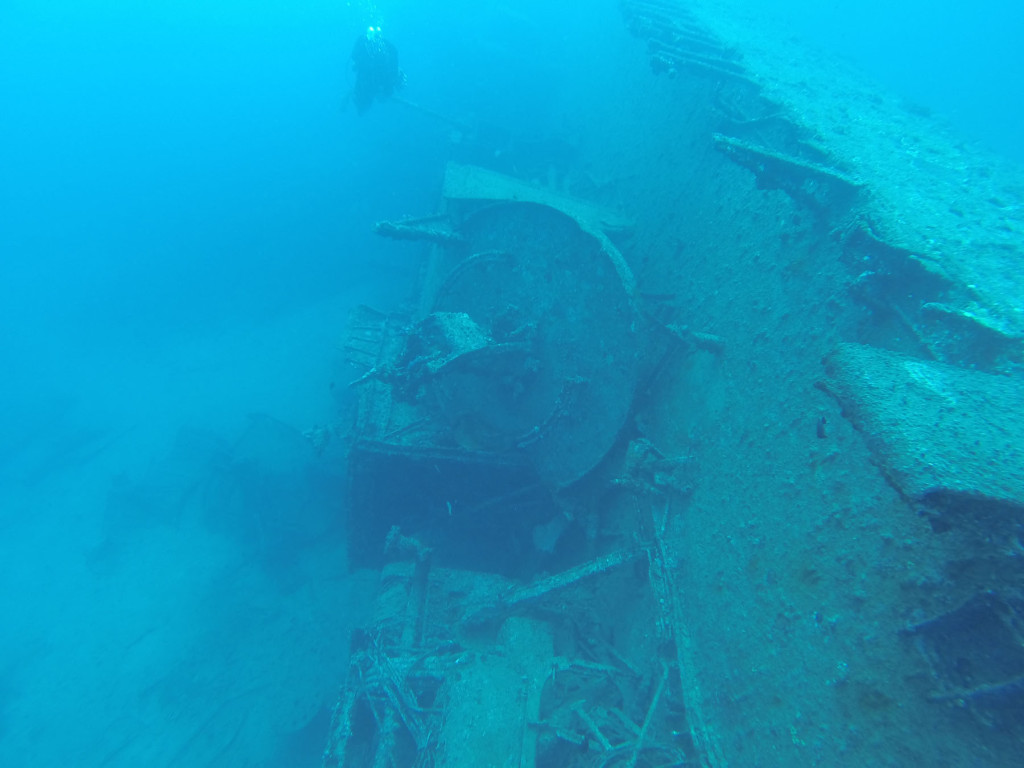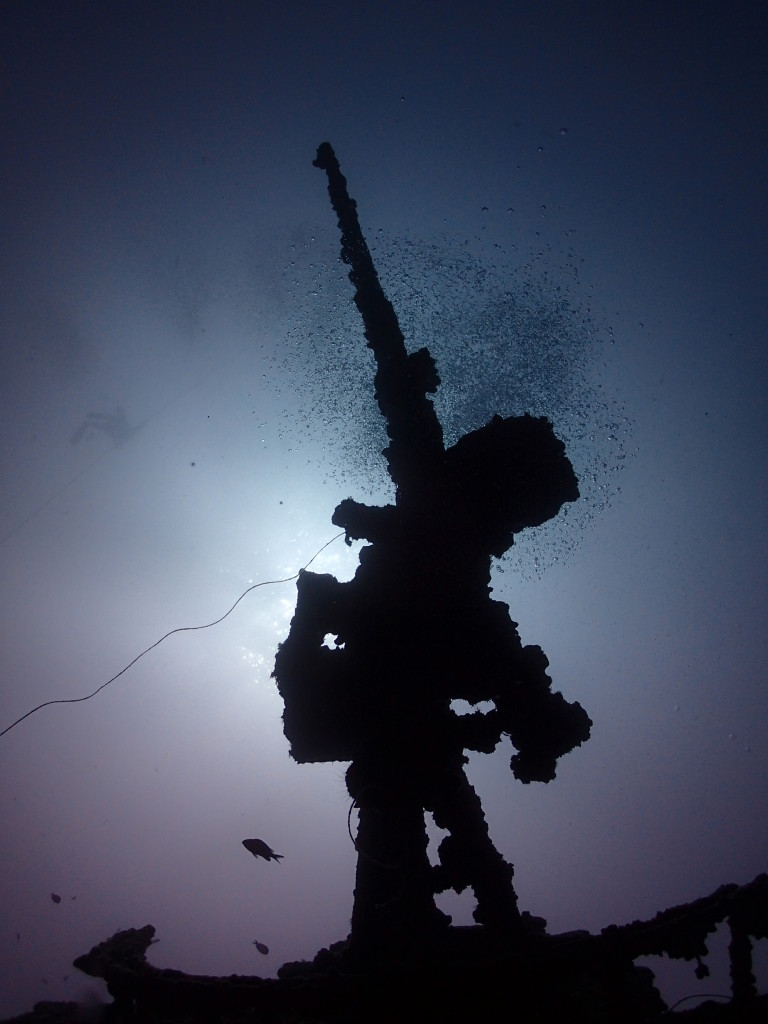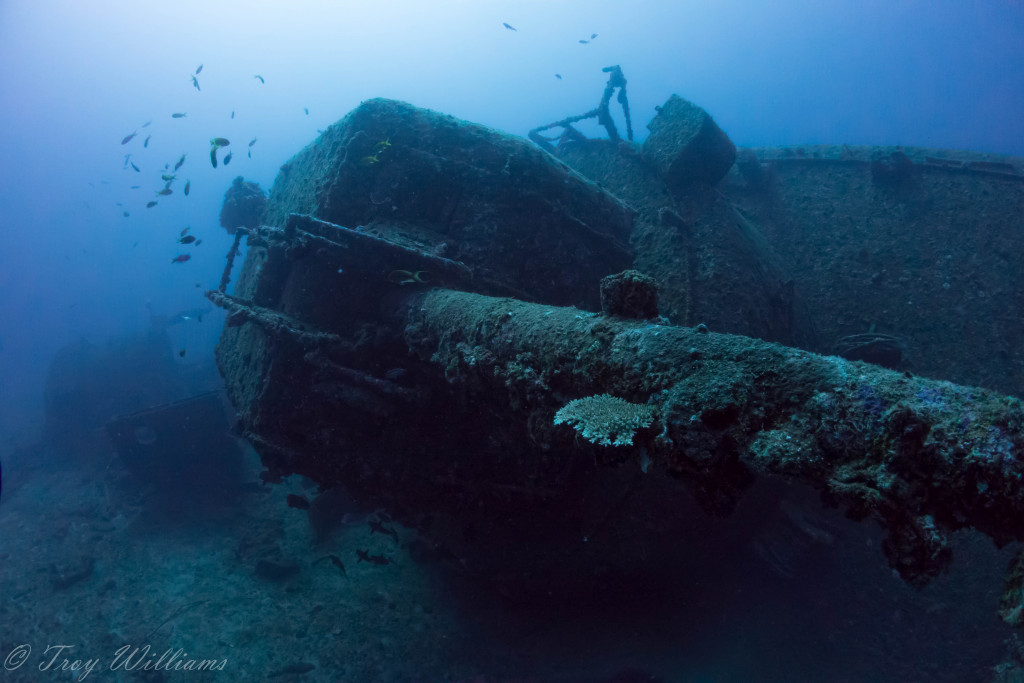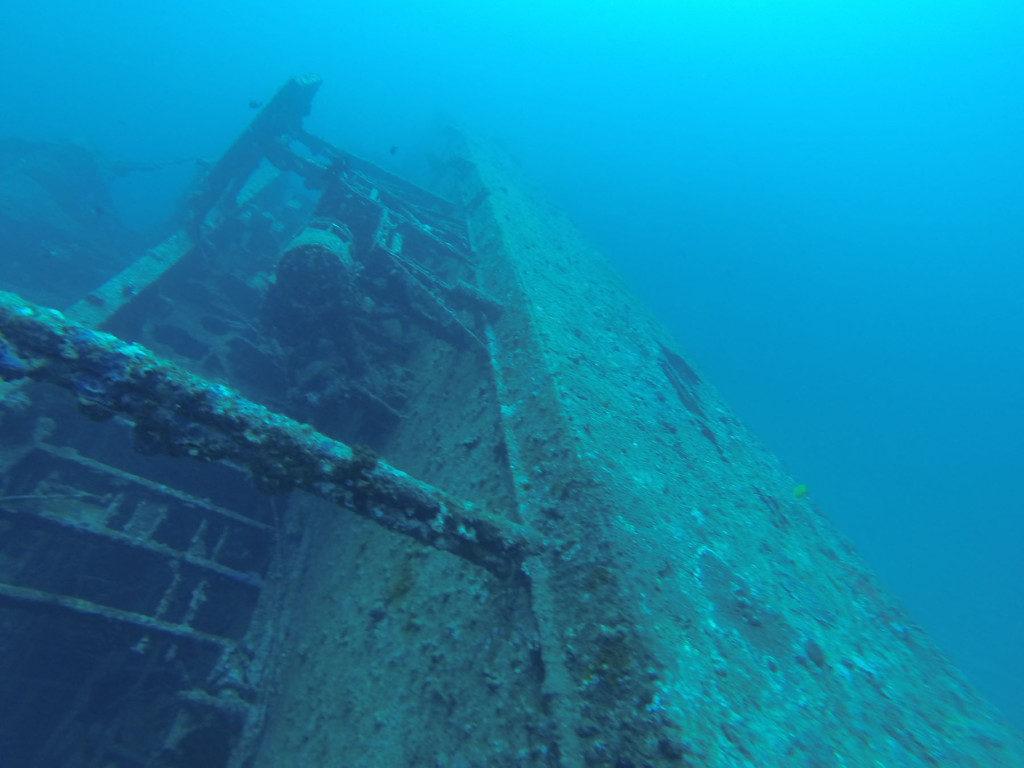By Ben Stevens
The USS Emmons sits at 138 feet at the bow and 150 feet at the stern on the seafloor, one nautical mile off the northern end of Kouri Island, Okinawa, Japan. As the dive boat arrives at the anchor buoy, which is tied to the ship, the anticipation to see a famous World War II ship, 69 years after it was sunk by kamikazes, wells up in my stomach.
We drop over the edge of the boat backwards, finding the ropes that lead down to the Emmons. Descending to the 30-foot buoy and looking down, we can see faint lines that indicate the sides and bottom of the ship. Descending lower into the blue water, the lines become a clear outline.
Approaching, I test my buoyancy, making sure to hover above the ship so as not to stir up the years of sediment that have accumulated. We slowly swim toward the stern, trying to imagine what the sailors aboard were doing and thinking the moment the ship was attacked by kamikazes. We see depth charges in place and ready for deployment and guns at the ready, rounds still loaded. I can picture the sailors’ devotion to their doomed ship.
The aft of the ship is torn away, scattered across the seafloor, having been hit by kamikazes. Proceeding back to mid-ship, I notice a buoy line and see what nature has done to this beautiful vessel. I feel honored to be able to commemorate the sailors who gave their lives defending this vessel, before time and nature takes it completely.
A wreath is placed above the builder’s plaque, the American flag unfurled by four divers who place it under the plaque. We pause for a moment to honor the men, both American and Japanese, who gave their lives fighting for their countries.
After receiving heavy damage by five kamikaze planes the Emmons was sunk by gunfire from the high-speed minesweeper USS Ellyson (DMS-19). The Emmons sits peacefully on the bottom of the seafloor, the resting place for U.S. sailors and Japanese alike. Kurt Reese, site manager for the underwater-egress training program at Camp Hansen on Okinawa and official videographer for the USS Emmons memorial dive said that U.S. and Japanese divers conduct a memorial dive every year, and try to do it as close to the date of the sinking as possible.
“We feel it’s more appropriate to do the dives on the actual anniversary date if possible,” he said. “Obviously they will vary from year to year as weather has the final say when it comes to when we do the dive.”
A U.S. flag and a banner are placed down near the builder’s plaque and the Emmons’ memorial plaque, which lists those killed or missing in action. Reese said the divers commemorate the ship to honor the memory of the men lost that day. “Through our actions we insure that they, and their contribution to the defeat of tyranny during the days of WWII will not be forgotten.”
“It’s an honor and a privilege every time I am invited to go,” said Russell Lemasters, product specialist at Tsunami Scuba for Camp Hansen’s Marine Corp Community Service (MCCS). “All the divers participate for different reasons.”
The USS Emmons Association has an annual reunion with the surviving crewmembers, their children and their grandchildren. The photos and videos taken on the dive are given to them at the reunion, keeping the survivors up to date. The memorial dive also raises money for the survivor’s scholarship fund, which is given to the children and grandchildren of the sailors attached to the ship during its years of service.
Reese encourages divers to hold advanced certification at the very least, along with deep-water specialties, to dive on the ship, as the top of the superstructure is below recreational limits. “You can easily see the whole ship from 110 feet, but there are several interesting artifacts on the sea floor around the ship,” he said.
Reese also recommends if divers are going for the first time, they should focus on one area of the ship and not worry about seeing the whole thing at once; this is a site best done with multiple dives. Divers who plan on staying down for any length of time or who plan to drop beneath 130 feet should have some type of technical certification.
A team of divers discovered the USS Emmons in 2001, 150 feet below the surface, littered with anchors from local fishing vessels. It now serves as an artificial reef and gravesite. Though it lies silently on its side, the memories from the survivors live on.





